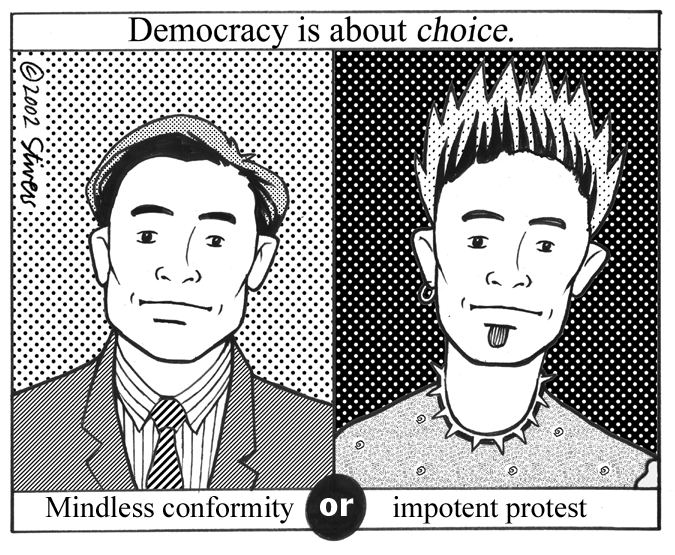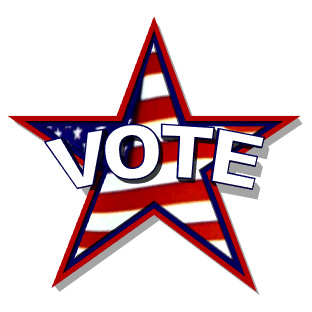
Several years ago, the Woodring College of Education at Western Washington University partnered with a local school, the Whatcom Day Academy, to be part of the League of Democratic Schools started by John Goodlad. Our partner school is now featured on the website of the Educational Institute for Democratic Renewal at Woodring, the institute that also houses the Journal of Educational Controversy. While the journal provides a format for a national and international exchange of ideas on important and controversial issues in education, our partnership allows us to put some of these ideas in practice and share them with others across the globe.
Recently, at a regional meeting of the League in Bend, Oregon, I was able to experience another school in the League, the Westside Village Magnet School. It is a wonderful example of a democratic progressive school and provides a model of what our schools can achieve. The first thing you notice when you first arrive at the school is the sense of activity all around you. The children are everywhere, and there is a sense of joy that permeates the building. Without the usual bells and teacher talk, the children just seem to know where they should be, something that they have internalized though the culture that the school has created.
A young boy walks up to me and introduces himself as Paul and shakes my hand as he welcomes me to the school. There is a sign in the library of the rights and responsibilities of the students, but it isn’t just the usual mission statements that one finds in schools. It is internalized in the students. We had arrived around noon and students were walking all around cleaning the school. We learned later that the multi-age school is broken into families that represent every level. For ten minutes each day, each family has an assigned set of chores that each student is responsible for. Other times groups are organized around interests.
CHILDREN DOING CHORES

We arrived too late to see the morning community meetings, but we were told that each day starts with different community meetings that are conducted by the children. Each age group has a chance to conduct the meeting and the students raise the issues that concern them.
There is also a peer mediation council made up of students where conflicts can be worked out. On this particular day, a video crew of volunteers from the community was videotaping the mediation process to show to other schools in the community who had requested more information about it. The children would role play a conflict (they played out an incident in the girl’s restroom today) and then take the conflict to the peer mediation council. The student mediators learn to use active listening, search for feelings as well as facts, paraphrase responses, and ask clarifying questions. The mediators then frame the situation, write up the issues and begin to discuss solutions. All discuss win/win solutions and continue to brainstorm until the conflicting students find a solution that they can both agree on. Both the role playing conflict and the mediation process were videotaped to show other schools how it works.
The school is organized around themes. The theme this year was on global issues. Each hub of multi-age student groups – broken into k-1, 2-3, 4-6, 7-8 or something like this – approach the themes at their own developmental level and in an interdisciplinary way. I visited a room where children were making masks. The criteria for the technical making of masks was posted on the wall along with two other sets of criteria – a Research Mask Criteria and a Mask Museum Display Card Criteria.
The artwork was easily connected with their research projects (the school is very inquiry-based) and the following criteria was used to guide the students with the creation of their masks on two dimensions other than just the technical criteria.
Research Mask Criteria:
1. Create a mask that represents the culture, living beings or environment impacted or affected by the issue.
2. Focus on a critical component /issue/solution from your research.
3. Personify your mask.
4. Exaggerate at least one feature.
5. Create Balance and unity.
6. Sketch your design first.
7. Follow Deb’s mask-making technique.
8. Adorn mask to enhance the message.
The third criteria that was posted on the wall dealt with a museum display of their work. Notice that many of their state standards that as a public school the school has to incorporate in its curriculum are easily integrated into this interdisciplinary approach.
Mask Museum Display Card Criteria:
1. Create a museum display card
2. Use a thought-provoking quote to inspire
3. Write a complete paragraph using a topic sentence that explains specific information from your research to support your opinions and conclusions.
4. Capture the reader’s interest.
5. Use descriptive language that includes adjectives, vivid verbs and adverbs.
6. Include a title.
7. Follow the writing process.
Many of the children had been studying the artwork of the Oregon artist, Betty LaDuke. The school places great emphasis on the arts and the creative process. As I wandered around the room watching the children draw and paint, I couldn’t resist asking them some questions. They very competently described their use of colors and patterns that they found in LaDuke’s paintings. The task was to create a painting that incorporated Betty LaDuke’s painting criteria. The assignment asked them to capture the essence of their research topic. They were also asked to share the people the topic mostly impacts, show how a change we might make would make a difference for our earth, capture the essence of the culture, include a theme, include a focal point, use vibrant, strong colors and repeated patterns, line and color (all reminiscent of LaDuke’s paintings), include people in the painting, and use Betty LaDuke’s folk art style. They were later to title it and mount it.
Drawings and paintings were all over the school and classroom walls -- most with a cultural and social theme. In fact, the social consciousness that the students exhibited was seamlessly intertwined with the academics and extracurricular activities.




We had arrived on a Friday which was a day for exploration. There were any number of classes going on from baking bread, repairing bikes, making mosaics, working in and exploring the garden and the streams, creating ceramics, engaging in drama, videotaping, and the Rise up for Nicaragua –sewing quilt. Again the social component was connected with the academic explorations in which the children were engaged. When a child read on the internet about “The Great American Bake Sale” to end childhood hunger in America, she brought the idea to her community meeting. As a result, one of the exploration activities was to learn to bake bread. The school has a huge oven in the garden where some thirty loaves could be made at one time. (It was tasty) The loaves were then donated to the poor and homeless in the community. The school also has its own greenhouse where the children are raising vegetables to give to the poor.
THE SCHOOL GARDEN

THE GREENHOUSE


THE OVEN


THE STREAM

One of the parents was working at the oven in the garden and I had a chance to chat with her. Of course, I asked why she sent her child to this school. At first, she mentioned the focus on individuality, creativity and community and then thought about the freedom from so much trivia she had seen in the two earlier schools that her child had attended – the obsession with gum chewing, wearing tank shirts, etc. Then after a few moments, she said, I guess it really comes down to the fact that this school respects children.
That mutual respect perhaps characterizes the school the best. There was so much more that I witnessed that I might share in a later blog posting. The school has a video on YouTube where you can see more. You can find it at: http://www.youtube.com/watch?v=kNS3GlHvVYM
Of course, the question that many of you probably want to ask is the question about children’s achievement and test scores in this kind of environment. Well, the school is high achieving. It reminds me of something that John Dewey always said – that one does not necessarily hit the goal by directly aiming at it. Once of the sad consequences of the current reform and its obsession with a standardized test score is the elimination of everything that makes learning and life worthwhile – the arts, music, dance, drama, physical development, etc. It is one of those unintended consequences of the policies we construct. But as Dewey always reminded us, when our curriculum is embedded in meaningful activities, when it has a function other than achieving a test score, children not only ironically achieve but also learn to love to learn. After all, as Dewey would say, education is life not just a preparation for life.
The next issue of the Journal of Educational Controversy will focus on the theme, “The Education and Schools our Children Deserve,” and we will be featuring articles, ideas, and video from other League schools. Susan Donnelly, the head of the Whatcom Day Academy, the school we partner with in the League, will co-edit the issue. Our hope is to provide a vision of what our schools can be.
The next issue of the Journal of Educational Controversy will focus on the theme, “The Education and Schools our Children Deserve,” and we will be featuring articles, ideas, and video from other League schools. Susan Donnelly, the head of the Whatcom Day Academy, the school we partner with in the League, will co-edit the issue. Our hope is to provide a vision of what our schools can be.













